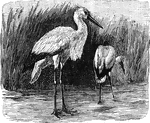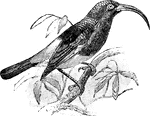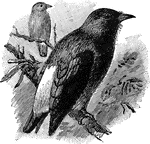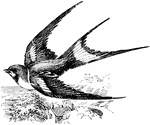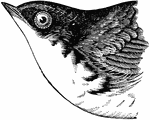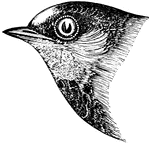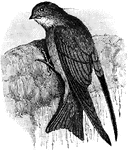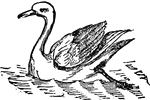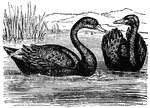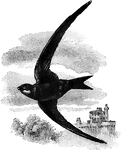234 illustrations of birds including: saberbill, sanderling, sandpiper, scoter, screamer, seagull, secretary bird, shearwater, sheldrake, shore-lark, shoveler, shrike, skimmer, scua, skylark, snipe, snow-bird, soui-manga, sparrow, spoonbill, starling, stilt, stork, sultan, sunbird, swallow, swan, swift, and swordbill
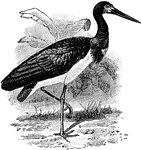
Abdim's Stork
The Abdim's Stork (Ciconia abdimii) is a large bird in the Ciconiidae family of storks.
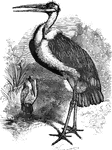
Marabout Stork
Found in the tropical regions of Africa, the marabout stork can be found amongst vultures, picking through…

Shoe-Billed Stork
The Shoe-Billed Stork is a bird related to the Storks that feeds on creatures that live in muddy water.
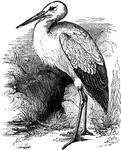
White Stork
Measuring about three feet in length, the white stork migrates to Europe during the summer, and back…
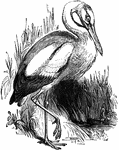
White Stork
The white stork (Ciconia ciconia) is a large wading bird in the stork family (Ciconiidae).
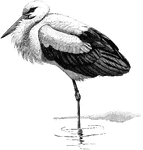
White Stork
"Ciconia ciconia, the White Stork, ...is white with black wings and orbits, red bill and feet." A. H.…
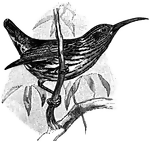
Streaked Spiderhunter
Arachnothera magna. Also called a spider-catcher, the Streaked Spiderhunter is "a bird that catches…

Sugarbird
"Certhiola flaveola, the Sugar-bird, coloration varies from black, grey, or purplish, relieved by rufous…
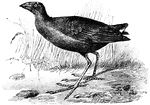
Black Backed Sultan
A bird that lives in the marshes. Has a stout bill and long legs, and more stately carriage. The plumage…
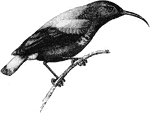
Splendid Sun-bird
"Cinnyris splendidus, the Old World Sun-birds, recalling the non-Passerine Humming-birds by their brilliant…
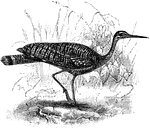
Sunbittern in Swamp
The Sunbittern (Eurypyga helias) is a bird native to the tropical regions of America.
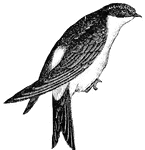
Swallow
The swallows are recognized by their long, pointed wings, forked tail and excessively short tarsi. (Figuier,…

Swallow
"As he skims along close to the ground or the water, quick as thought he catches any unlucky fly that…

Swallow
Swallows are members of the perching bird family. They have narrow wings and long split tails.

Swallow
An extensive genus of birds found in all parts of the world. They are distinguished by a short, depressed…
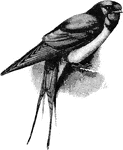
Swallow
"Hirundo rustica, the Swallow, is metallic black, with a variable amount of chestnut or rufous on the…

Martin and Swallow
"Cotile riparia. Bank Swallow. lustreless mouse-brown; wings and tail fuscous. Below, white, with a…
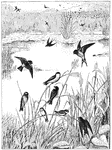
Swallow Roost
The Sand Martin (Riparia riparia) is a migratory passerine bird in the swallow family. This species…
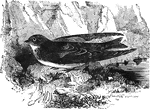
Bank Swallow
The bank swallow (also known as the sand martin) lives in large communities, often of several hundred…
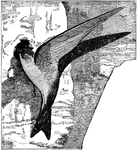
Bank Swallow
"Cotile riparia. Bank Swallow. lustreless mouse-brown; wings and tail fuscous. Below, white, with a…

Cliff Swallow
The swallows are recognized by their long, pointed wings, forked tail and excessively short tarsi. (Figuier,…
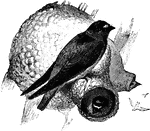
Cliff Swallow
The Cliff Swallow (Petrochelidon pyrrhonota) is a passerine bird in the Hirundinidae family of swallows…
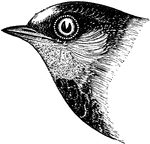
Cliff Swallow
"Cliff Swallow. Eaves Swallow. Crescent Swallow. Mud Swallow. back and top of head, with a spot on the…
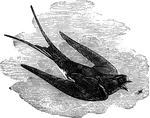
Common European Swallow
The common European swallow, which averages approximately six inches in length. This migratory bird…
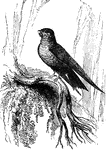
Esculent Swallow
The esculent swallow's nest is prized among the Chinese as a delicacy. It is native to many parts of…
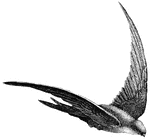
Salangane Swallow
The Swallows are recognized by their long, pointed wings, forked tail and excessively short tarsi. (Figuier,…
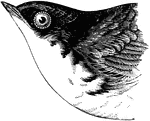
White-belied Swallow
"Entire upper parts glossy dark green; wings and tail blackish, lustrous; lores black. Entire under…
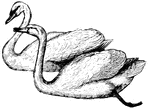
Swan
The swan has been an object of admiration for its graceful neck, oval head, prominent beak, soft, and…

Swan
A genus of web-footed birds of the duck family. They are among the largest and most beautiful of aquatic…
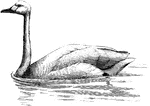
Bewick's Swan
"Cygnus bewicki, Buck's Swan, is white with black feet and bill, the basal half of the latter being…

Black Swan
The swan has been an object of admiration for its graceful neck, oval head, prominent beak, soft, and…
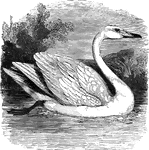
Mute Swan
Measuring up to five feet in length, the mute swan is found throughout Europe, and has long been domesticated…
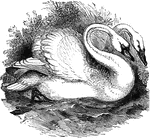
Mute Swan
The mute swan (Cygnus olor) is a large water bird in the family Anatidae which also includes geese and…
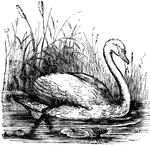
Mute Swan
"Cygynus. White Swans. Neck of extreme length. Trachea normally entering sternum. Bill tuberculate or…
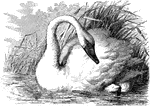
Whistling Swan
"Cygnus columbianus. Common American Swan. Whistling Swan. Bill with a yellow spot or blotch in front…

Swift
Swifts are related to swallows. The Swallows are recognized by their long, pointed wings, forked tail…

Common Swift
"The Swift, like swallows in many respects, their structure is almost entirely different, and some naturalists…

Common Swift Flying Through the Air by a Structure and a Tree with its Mouth Open
"The coloration of the twenty or more species of Cypselus is sooty-black or mouse-brown, frequently…
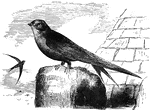
Common European Swift
This swift prefers to build its nest under the eaves of houses, in holes around steeples, in old towers,…

Northern Black Cloud Swift
"Nephaecetes niger borealis. Northern Black Cloud Swift. Entire plumage sooty-black, with slight greenish…

Spine Tailed Chimney Swift
A well known black chimney swift of the United States. So called because the shafts of the tail feathers…
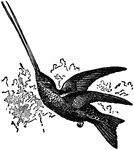
Swordbill
"Swordbill is a popular name for any individual of the humming bird genus, Docimastes. The bill which…
